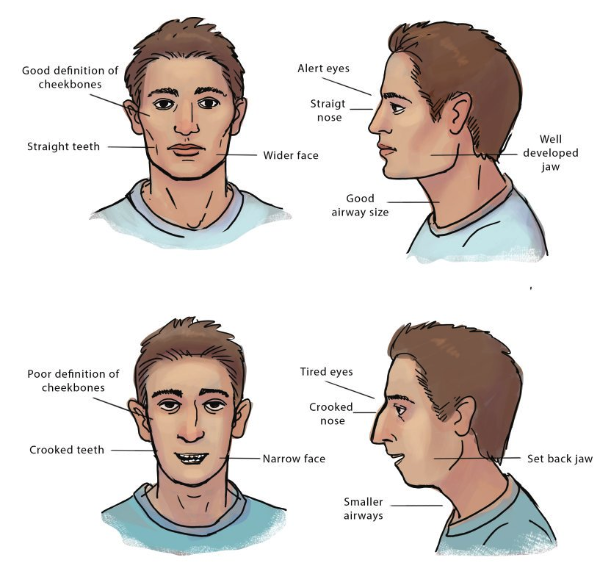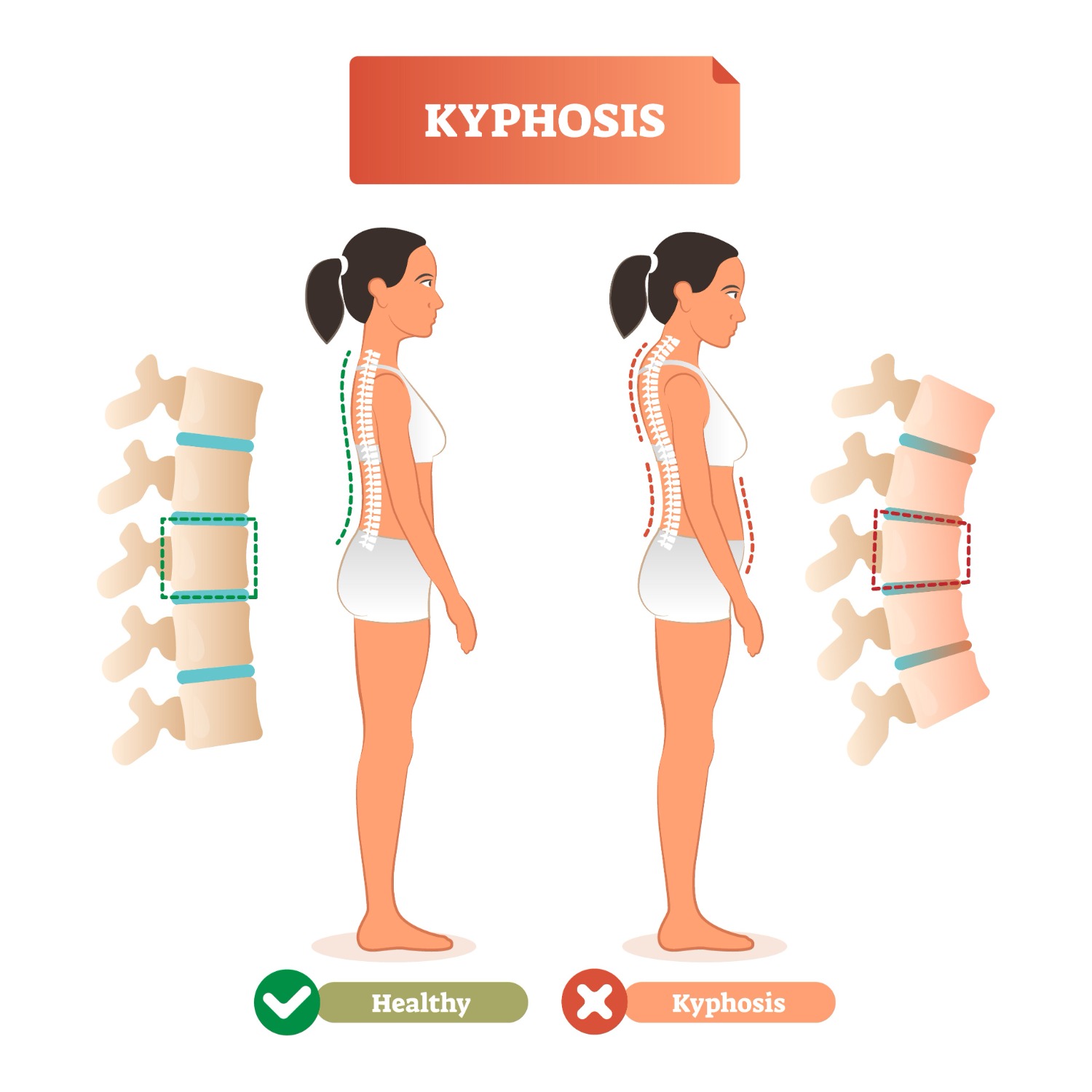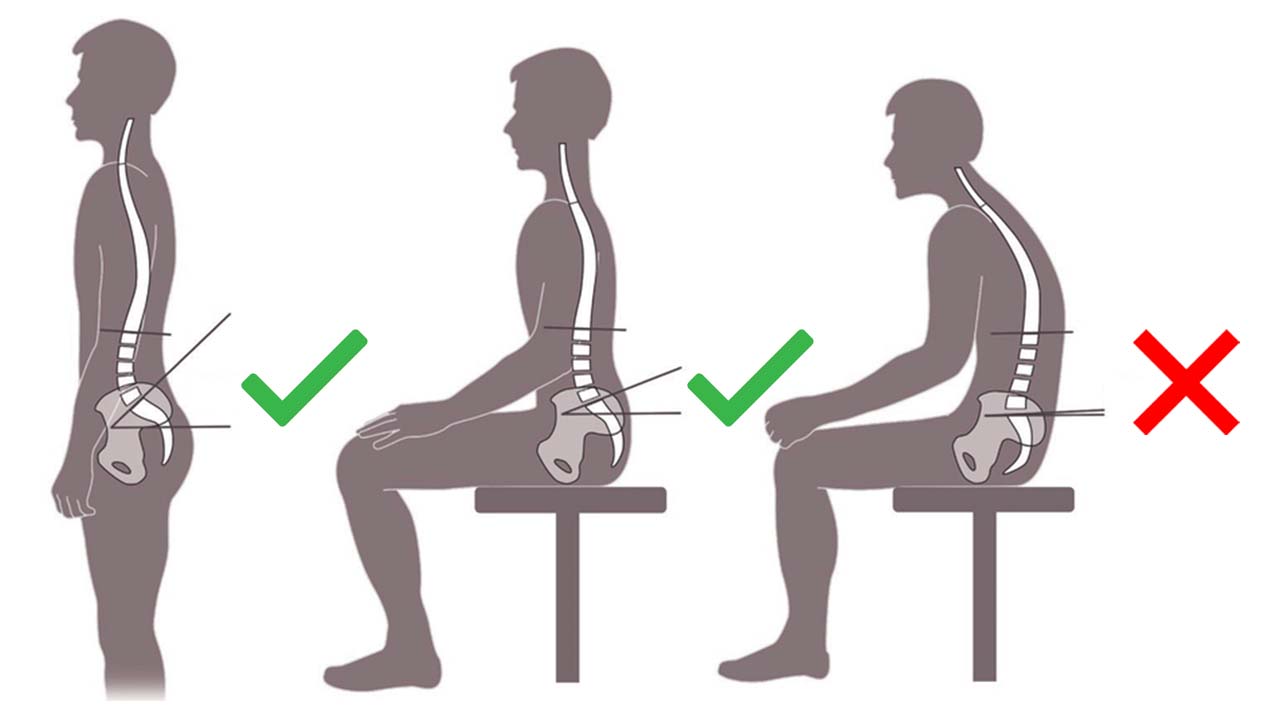So, you want to get better results from mewing?
You want to look better, be healthier, and improve consistently over time, right?
In this article - I am going to give some more advanced tips for how you can maximize your progress with Mewing and improving your tongue posture.
Playing The Long Game
When it comes to Mewing and tongue posture, you want to think long -term.
I know this can be tough for a lot of people. We live in a society where we are used to quick fixes and instant gratification.
The reality is, the way you look and breathe today was impacted by a lifetime of habits. In order to change those habits, you need discipline, commitment, and patience.
Patience and discipline are the two keys to getting results from Mewing. You need discipline to do the exercises and stretches daily, and you need patience to not give up.
Your Face is Constantly Changing
This is good news for some, bad news for others. Luckily for you, if you are taking the right steps then you are on the right path.
See, we know that our facial bones change over time. Constantly. Even into our adult years. This means that if you improve your tongue posture and body posture on a daily basis, over time you will be on the right side of this equation.
Unfortunately for some - who either mouth breathe, have poor posture (or both), they are getting worse over time.

The Goal of These Routines
What follows in this article is a guideline to improving your resting tongue posture. This is the most important goal to focus on. You want your tongue to be in a better position when you are not even focused on it consciously.
While you're sleeping, reading, exercising, watching TV, going for a walk, you can improve your resting tongue posture without focusing on it 24-7! Imagine that? Just living your life, and improving from your daily exercises.
All the routines I will be presenting to you in this article will be aimed at helping you improve your resting tongue posture. If you can do that a little bit at a time, day by day, eventually you will see the results!
For more background on why resting tongue posture is so important, read our article introducing Mewing & Tongue Posture.
The 3 Important Areas
When it comes to improving your resting tongue posture, there are 3 key areas we want to focus on improving.
1. Strengthening your tongue & Orofacial muscles
This involves doing exercises to strengthen your tongue and surrounding muscles that contribute to proper tongue posture. Some ways to do this are myofunctional therapy, and Myospots.
These exercises will create the habit of your tongue being up on your palate. By doing them daily, eventually, you will notice your tongue naturally sitting up on your palate, without you even trying!
You can also do exercises to strengthen and stretch your lip muscles, buccinators, and jaw muscles. To get an idea of some of these exercises you can check out our free program where we show you some basic exercises to get started.
2. Improve Your Posture (a daily focus)
Posture and tongue posture go hand in hand. When you improve your forward head posture it will be easier for your tongue to rest on the roof of your mouth.
Taking a daily focus to improve your posture means doing exercises & stretches every day. This can include upper body stretches (neck, chest, lats, etc.) and it can also include lower body stretching (hip flexors, hamstrings, glutes, etc.)
Another crucial part of improving your posture is strengthening weak or underdeveloped muscles that support good posture. Often this includes core muscles, hip flexors, low back muscles, rhomboids, and others (depending on your particular imbalance).



3. A focus on changing daily habits
A big component to this all is habitual. The way that you sleep, stand, eat, and even speak has an impact on your tongue posture. If you can start to improve those small daily habits, in the long-run this will also add up to massive improvements!
Strengthening the tongue & orofacial muscles
Mewing can be very effective, and important. Mewing involves consciously thinking about keeping your tongue on the roof of your mouth. It involves noticing through ought the day whether you are maintaining proper tongue posture, or not.
However, what I am describing here is more effective than mewing alone.
When you do deliberate exercises for your tongue, you are training it so that you don’t need to think about Mewing.
By doing daily exercises you will notice over time that your tongue is naturally lifting up against your palate more. And this will get your results in the long run.
So, without further ado let me introduce you to some of these exercises.



The tongue is a muscle that can be stretched and strengthened
1. Spot Motions
Spot motions involve getting the tip of your tongue familiar with the spot. By doing this exercise you will find that your tongue will “cling” to this spot more easily. To learn exactly how to do this exercise please register for our free course, where you will be shown demo videos.



2. Tongue Stretch
Improving the mobility of your tongue is important for your tongue posture as well. Mobility means how easily your tongue can reach the roof of your mouth. Many people have tongue ties that inhibit the proper functioning of their tongue. However, you can also do simple and gentle stretches for your tongue to improve its mobility.
One simple example of this exercise is “tongue point and trace”. To do this exercise simply start with your tongue on the “spot”, and then gradually trace the tip back along the roof of your mouth as far back as you can.
What you will likely feel is a stretch of the fascia and muscles of your tongue. After you do the exercise your tongue should more easily rest on your upper palate. Go here to watch a video tutorial on this exercise and more.
3. Use MyoSpots or a similar product
Myospots are small adhesive pads made of natural ingredients. They stick to your upper palate, and train your tongue to be positioned properly. These are being used in by myofunctional therapists all over the world, and they work!
When the pad is up on your palate, your tongue is forced to go up and rest against that pad. This is almost a hack for Mewing, since your tongue will be up on your palate whether you're thinking about it or not.
After the pads dissolve, your tongue will “remember” this position. You are training the subconscious habit of proper tongue posture.
Myospots also strengthen the tongue muscles, and train your swallowing pattern. To learn more and purchase Myospots you can visit the website here.



4. Consider myofunctional therapy
Working with a myofunctional therapist can be a great way to strengthen the tongue muscles. First, they will assess your situation. Then, they will give you a tailored exercise program that will change as you progress.
Here are some resources to find a myofunctional therapist as you wish.
Final Word on Tongue Strengthening
Doing tongue strengthening exercises of some sort every day is crucial to you making progress. Over the days, weeks, and months, you will continue to improve the tongue’s resting posture. In the long run - this will make you look and feel better!



Daily Posture Exercises
Along with your tongue exercises, I recommend that you focus on improving your posture. There are many different ways that you can do this. However, corrective exercises and stretching are my personal favourite.
People often talk about chin-tucking. As in consciously thinking about keeping your chin tucked through ought the day. This is fine and will work. But I would rather you actually improve your posture so that your chin is tucked without you trying to force it to be.
This means, you assess your current posture, and then determine which exercises will be the most beneficial to you improving.
One thing to note when it comes to posture is that the entire body is related. Meaning, it is more effective to focus on the entire body, than just the head and neck for example.
Now let’s get into some specific exercises you can do to improve your posture.
1. Head & Neck
Forward head posture is possibly one of the most important imbalances to correct to improve your tongue posture. When the head is forward and rotated in front of your midline, your tongue will have a harder time resting where it should.
Generally, forward head posture is caused by a muscle imbalance. This means that certain muscles are overdeveloped and tight, and certain muscles are underdeveloped and weak.



We're in a poor posture epidemic
In this case, generally, the upper trapezius, levator scapulae, splenius captious, SCM, and other neck muscles are tight. These muscles need to be stretched daily. For examples on how to do these stretches, see my Youtube videos here.
The muscles that are generally weak, are the deep cervical flexor muscles, which also happen to be connected to the tongue.
By strengthening the tongue, you are actually strengthening the muscles that stabilize the head and neck. This is because the tongue muscles are connected to the hyoid bone in the neck.
Strengthening the tongue muscles, and cervical flexors can help you further improve your head & neck posture
2. Upper Body Posture (Thoracic Spine)
Although the goal is to improve the head position, we cannot ignore the rest of the body.
The most common postural imbalance is rounded shoulders or kyphosis. Rounded shoulders and forward head posture are what most people think of when they hear poor posture.
When we see someone slouched over, with their shoulders rounded in. The upper back generally also round forward, which is called excessive kyphosis.
As the shoulders round and the thoracic spine rounds, the head cannot help but move further forward. Therefore, if we improve our rounded shoulders, we can improve our head position even more.



The main muscles that contribute to rounded shoulders include tight biceps & forearms, tight pec major/minor, tight lats & upper trapezius muscles and more.
By stretching these muscles daily, we can begin to improve rounded shoulders. See our free course for more detailed demonstrations of these exercises.
Also, there are opposing muscles that are generally weak, these include your rhomboids, your rotator cuffs, and often your low back (which we will get to in a moment.)
By improving your rounded shoulders, you’ll be one step closer to your ideal posture.
Most people with forward head posture and rounded shoulders generally have the same muscle imbalances. Below is a list of muscles to stretch and strengthen to improve your posture.
Muscles to stretch (the tight muscles):
Muscles to strengthen (the weak muscles)
By stretching these muscles daily, we can begin to improve rounded shoulders. See our free course for more detailed demonstrations of these exercises.
By improving your rounded shoulders, you’ll be one step closer to your ideal posture.
3. Lower Body Posture (Lumbar Spine)
Often overlooked, but extremely important is the lower body. If you have an imbalance in your lumbar spine, it will contribute to the other imbalances listed above.
The 2 most common imbalances are anterior and posterior pelvic tilt. These will cause either “swayback” or excessive curve in your low back. Both of these can contribute to forward head posture and rounded shoulders.
If you have anterior pelvic tilt, you will want to stretch your hip flexors and strengthen your glutes, hamstrings, and core muscles (transverse abdomens).
If you have posterior pelvic tilt, you will want to strengthen your hip flexors and low back and stretch your hamstrings.
There are also plenty of articles and videos online explaining how to correct each of these. To learn more about these lower body routines, you can look into doing our 12-week posture program.
Habits: The Foundation of Success
Now that we've discussed corrective exercises, it's time to move on to something potentially even more important.
Habits. We are what we repeatedly do. You got to where you are today, because of repeated habits. Now let’s take a look at how we can improve those habits to get you even better results in the long run.
Habit #1 - Breathing & mouth breathing
Perhaps the most important to discuss is the way that you breathe. If you breathe through your mouth, it will be almost impossible for you to have proper oral posture. When we mouth breathe, our tongue is forced to drop off the roof of our mouth.
You want to be making sure you are nose breathing as much as possible through ought the day.
One ways to train the habit of keeping your lips sealed, is to use a toothpick. Place a toothpick gently between your lips while working, watching TV, or resting. If your lips separate, the toothpick will drop and you will notice!
This is a great way to bring awareness to your lip seal through ought the day.



Do you snore? Snoring in adults and children almost always indicates mouth breathing at night.
Habit #2 - Sleeping
When we sleep at night, our tongue's posture and our breathing will reset to their habitual pattern. Meaning, it's impossible to monitor your tongue posture and breathing while you sleep. So what will happen?
If you have inadequate tongue posture, lip seal, and more importantly capacity to breathe through your nose - you will likely resort to mouth breathing at night.
A great way to improve this is mouth taping. Using surgical or thin breathable tape, you can seal your lips as night. This has been recommended by many dentists and books as well. One such example is the book “breathe” by James Nestor.
I have used mouth taping for several months, and it can work great!
In the long term, ideally, you want to use the corrective exercises from earlier in this article so that your tongue naturally rests on your palate, and your lips close more easily. That way, when sleeping you will naturally nose breathe.
Mouth tape can act as a great reminder to keep your lips sealed when you are asleep. This habit can even translate into your waking hours!
Habit #3 - Sitting
Sitting is not a natural position for human beings to be in. Especially for 8-16 hours per day. When we're sitting hunched over a computer or smartphone, our muscles will get used to being in a poor postural position. They will adapt to this posture.
I believe that our worsening posture and tongue posture as a society is largely due to the increase in technology use. Luckily, there are some things you can do to improve your seated posture.



Proper low back curvature while sitting (image from researchgate)
Habit #4 - Eating
We chew and swallow hundreds of times per day, and believe it or not there is a right and wrong way for this as well!
When chewing and drinking, we want to try and swallow properly. This means not to use our lips and cheeks when we swallow, but only using our tongue. You may need help to achieve this result. BY doing corrective exercises, mewing, and using myospots and/or a myofunctional therapist you can correct an improper swallowing pattern.
See our New to Mewing article to learn more about the proper swallowing pattern.
It can be a good idea to chew food in front of a mirror to determine whether you are chewing evenly. Quite often, people use one side to chew more than the other. I've been working on correcting this life-long habit myself!
By looking in the mirror you can see if you do this. Of course, we want to chew evenly with both sides of our mouth to ensure that the jaw muscles develop evenly.
Habit #5 - Standing and walking
We want to maintain proper posture while standing and walking as well. A simple way to do this is what I described earlier. Imagine a string running through the top of your head, and someone gently pulling the string directly upwards. This will force you to lift your head while you walk and stand, and will help to prevent excessive slouching.
I am not a fan of trying hard to force perfect posture. Such as “SHOULDERS BACK” or “KEEP YOUR CHIN TUCKED”. The problem with these things, is first of all they are not natural. You are forcing yourself into an awkward position. Also, they look quite strange.
A better approach, is to lift your head as I described, and then simply relax your shoulders and the rest of your muscles.
The corrective exercises described earlier are what can be used to create better posture over time. Rather than try and force your body un-naturally into this position, use the exercises so that you naturally have better posture.
Putting it all Together: The Blueprint
It is important to have a routine for your corrective exercises. This is because if you do not make it a daily habit, you will probably find that you have a difficult time sticking with them.
What I recommend is that you create a daily routine for yourself. Write down exactly what exercises you will do every day, and then pick a time to do them. In the morning or evening generally works best for people.
If you do the exercises every morning, it is very unlikely that you will have an excuse to skip out. As you do the, day after day, you will start to see the results compounding!
Then, use a habit tracker to record every time you do these exercises. Seeing the “streak” or chain of habits will be motivating. It will also give you a clear indication of whether you are doing the exercises daily or not. You can’t lie to yourself this way.


We recommend that you do tongue exercises, and corrective postural exercises every day. Also, focus on your daily habits, and over time you will see a cumulation! Your tongue posture will improve more and more. You will first feel this, you will breath better, and then over time you will look better.
If you want a program to give you the exact exercises and routines, then join our perfect posture program. There are daily videos released with exercises that increase in difficult over the weeks, as you make progress. You will have detailed explanations for each exercise, and have access to the community to discuss your progress and be held accountable. We also have daily group habit tracking to ensure you stay on track.
If you choose to create your own routine, or consult with a myofunctional therapist - that's also a great option.
Whatever you do, make sure to stay disciplined and patient. Results take time!
Thank you for reading, and continue to put your Best Face Forward!

